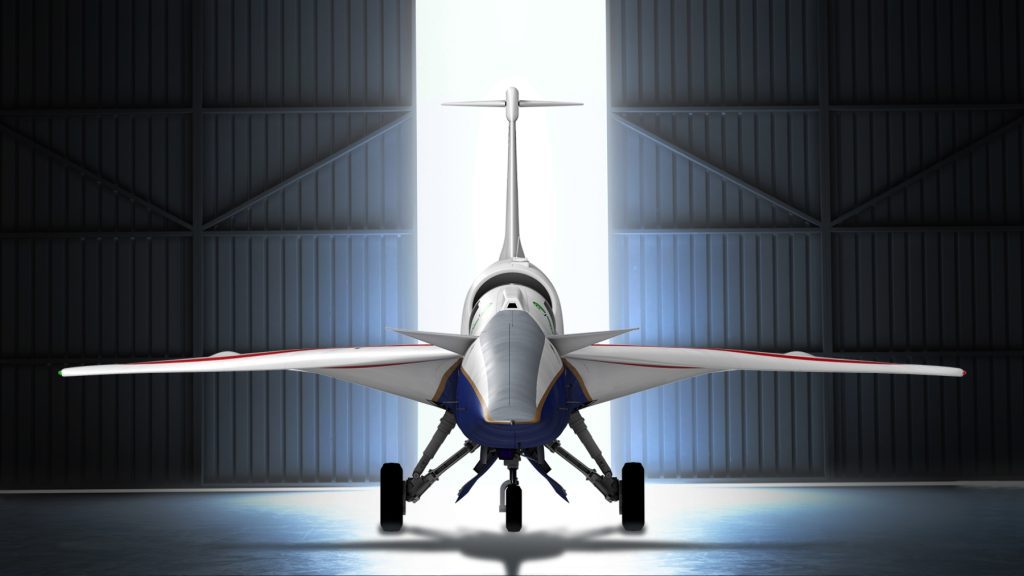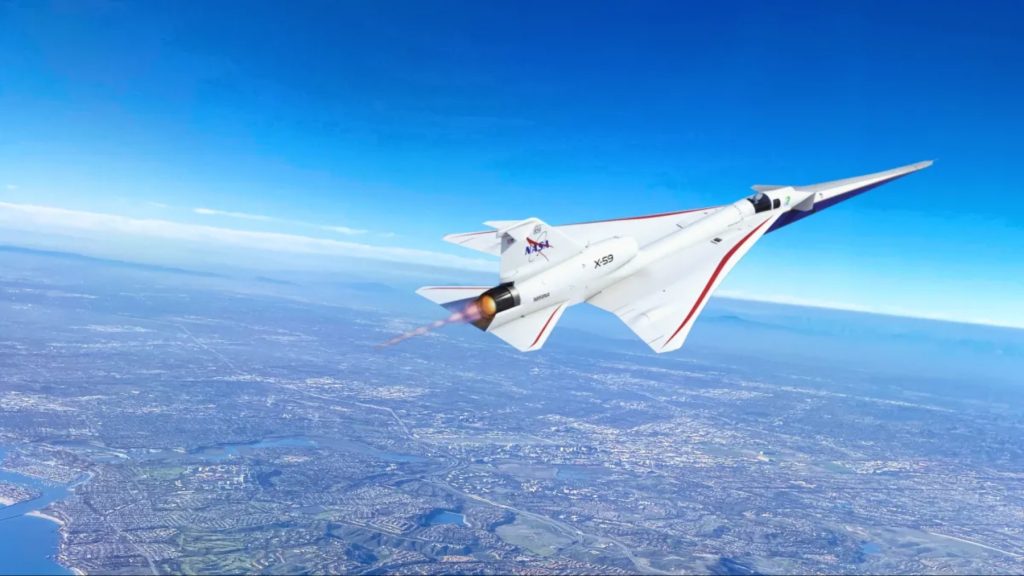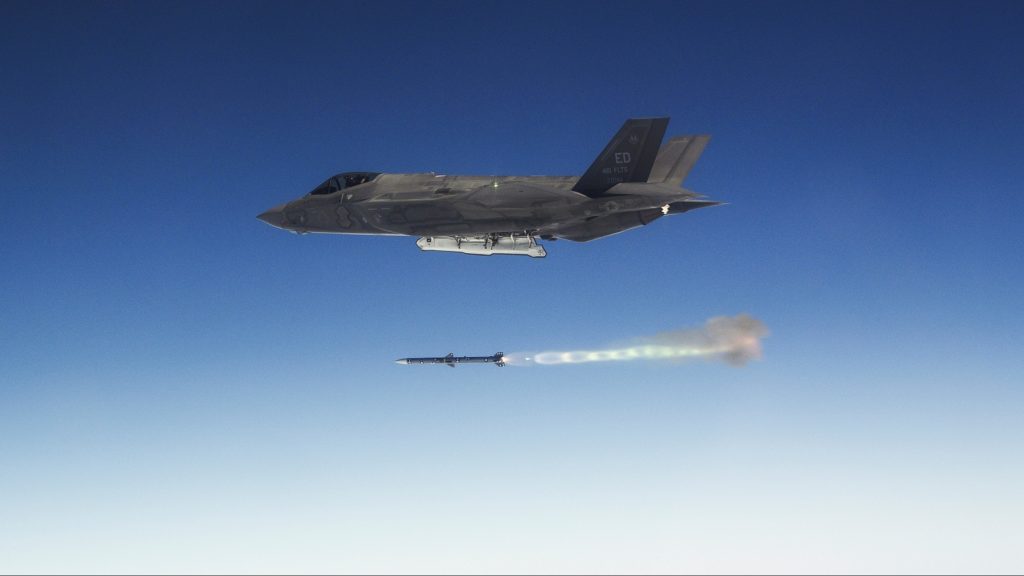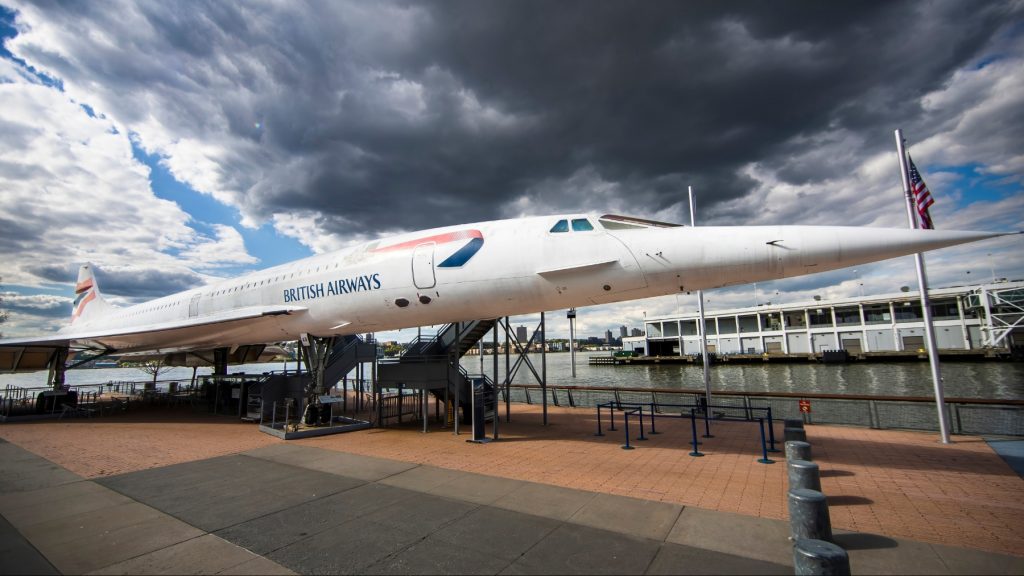
In three days’ time on January 12th, a project that’s overdue by only about 55 years will take flight. A NASA project by the name of QUESST, an acronym for quiet supersonic transport, will provide the first demonstration of a sonic boom-less flight.

The aircraft that will cruise through the sound barrier with barely a whisper is the XP-59, pictured above courtesy of NASA. It’s been designed and built by the mischievously named Skunk Works, Lockheed Martin’s sort-of secret engineering entity previously responsible for such tech breakthroughs as stealth technology, the first jet-powered fighter plane and the extraordinary SR71 Blackbird, the spy plane whose altitude ceiling and speed have remained classified since 1966.



The News is Bigger than You Think
When this news first appeared last week, there was a sentence buried in a mass of text which innocuously remarked that all data from the demonstration will be passed on to relevant air transport stakeholders.
I write ‘innocuously’ because the data itself may very well set down a marker for an important advance in commercial air travel.
Concorde was not allowed to fly over land at supersonic speeds because of the distinctive double boom which had enough sonic resonance to shatter glass, in some instances. It was therefore deemed to be a hazard to humans. And then in 1976, the New York Port Authority decided Concorde could not land at JFK, La Guardia or Newark airports.
It took a year to overturn the ban, but the damage done by a total overland flight ban and a year’s reputational loss from not being able to service the two busiest international air routes – Paris to New York and London to New York – had the entire air transport sector rethinking the viability of Concorde.

18 airlines had placed orders for Concorde, some as early as four years before it was even flying. Only 3 followed through. Obviously Air France and British Airways but interestingly, Iran Air also had a confirmed purchase. But this was cancelled after the overthrow of the Shah and his government. So the Concorde remained an elitist marketing prop for the national carriers of France and Britain until a fatal accident in 2003 put paid to it all and this beautiful aircraft was retired from service. The successful demonstration of the XP-59 will once again open the door for viable mass supersonic travel. And flying times will be shortened by 50 to 60 percent. Supersonic, it seems, is on the way to becoming mainstream.
But All of the Above is Old Thinking
For three reasons.
The first reason is that the age of getting from one place to another very quickly is in a hiatus at the moment. The rise of telecommunications technology, and its acceleration during the pandemic, has already cut ‘travelling time’ down to however long it takes to connect on Zoom, Skype of Teams. 98% of all meetings are no longer bound by geography, but connectivity. Landing in New York one hour earlier than you took off in Paris is no longer a thing. Digital convenience and cost considerations have marginalized the necessity for urgent ‘get me to New York yesterday’ business requirements.
The second reason is biofuels. It’s all very well to swoon with relief that fossil fuels are being phased out, to be replaced by biofuels. But biofuels don’t materialize out of thin air. They are twice the price of aviation fuel. And supersonic jets need almost three times the amount of fuel for thrust purposes. The world’s sustainability focus requires a decarbonization of the atmosphere, not the luxury of propelling passenger aircraft through the air at Mach 2. Post 2008 ‘tight-belt’ economics plus global-agreed imperatives suggest that mass supersonic transport will not materialize as we perceive it now. Which brings us to the third point…
Supersonic is So Last Century
Since the seventies, supersonic was starting to look like an investment cul-de-sac. But interest and cash started building for the possibilities and benefits of hypersonic travel. The difference between the two is the former categorizes speeds of Mach 1 and up. The latter categorizes speeds of Mach 5 and up. The difference is not just speed. New materials are needed to withstand the immense friction at between 6,000 and 11,000 kilometres per hour.
The difference is not just about speed and materials, either. It’s about energy. A turbofan jet engine can take an aircraft to supersonic speeds. It cannot achieve the same to reach hypersonic speeds. Most of Tom Cruise’s adventure aboard Dark Star in Top Gun Maverick was just a flight of fancy. But the use of Scram jets to boost his speed to hypersonic was real. Scram technology ignites a fuel-rich airflow which is already travelling at supersonic speeds. Another powerplant, the rotation detonation engine, has been successfully tested. This baby spins at 20,000 revolutions per second. It is astonishing technology that will get you from London to Sydney in an hour and a half.
So when you next see or read of the X-59 successfully demonstrating its quiet supersonic capabilities, think bigger than supersonic. For this demonstration is the beginning of a much, err, gianter leap for air transport.
Inside Telecom provides you with an extensive list of content covering all aspects of the tech industry. Keep an eye on our Tech sections to stay informed and up-to-date with our daily articles.